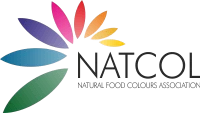NATCOL
Introduction to Natural Food Colors
COLOR INFLUENCES
Color influences consumer food preferences. The color of food is considered as the single most important product-intrinsic sensory cue when it comes to setting people’s expectations regarding the likely taste and flavor of food and drink. For this reason, color has been added to food to enhance it for several hundreds of years.
Originally, ingredients providing color were made from existing natural sources or grown locally in home kitchens. The industrialisation of food production drove the need for food colors that were consistent in every production batch and stable throughout shelf life of the product.
From the 1860’s onwards, both naturally extracted and synthetically produced food colors were developed and put into production. Over more than a century, the increased availability of these industrial food colors resulted in the introduction of bright and intense colored food products.
The regulatory frameworks including safety assessments of the food colors were introduced in the mid-1900s.
During the past 50 years, an industry focusing on natural food colors has developed, with the focus on providing natural, safe and stable food colors.
What Are Natural Food colors?
Natural food colors originate from a wide range of sources like vegetables, fruits, spices, algae and/or other edible natural sources. They offer a wide spectrum of colors and impart color when added to food or drink.
Natural food colors are preparations obtained from foods and other edible natural source materials obtained by physical and/or chemical extraction resulting in a selective extraction of the pigments relative to the nutritive or aromatic constituents.
They come in many forms consisting of liquids, powders, gels, and pastes.
Food coloring is used both in commercial food production and in domestic cooking.
Below are some of the main colors derived from natural sources including the name of the natural pigments responsible of their coloring properties. Depending on the source and the extraction process applied, it will result a Natural Color additive or a Coloring Food.









